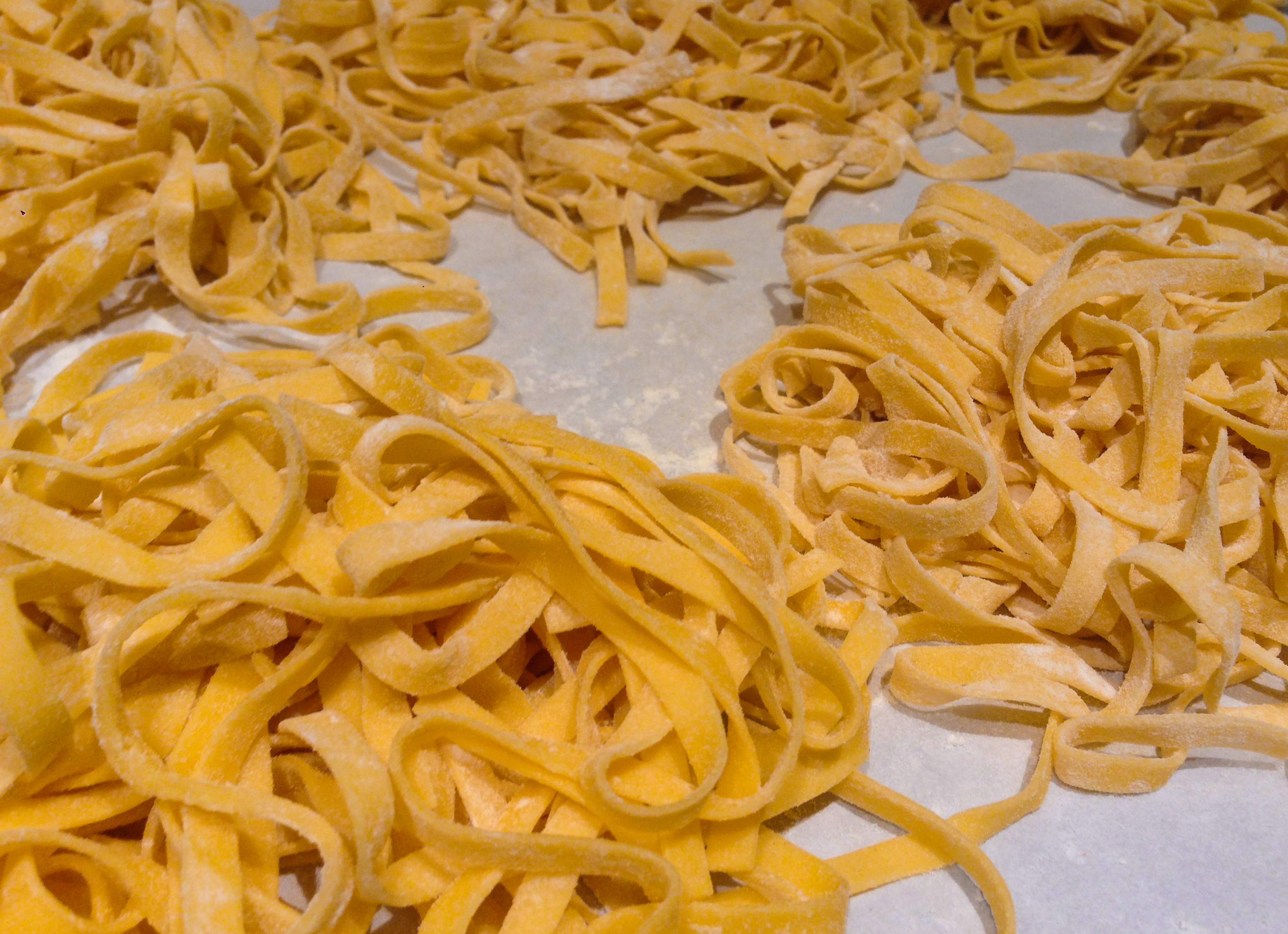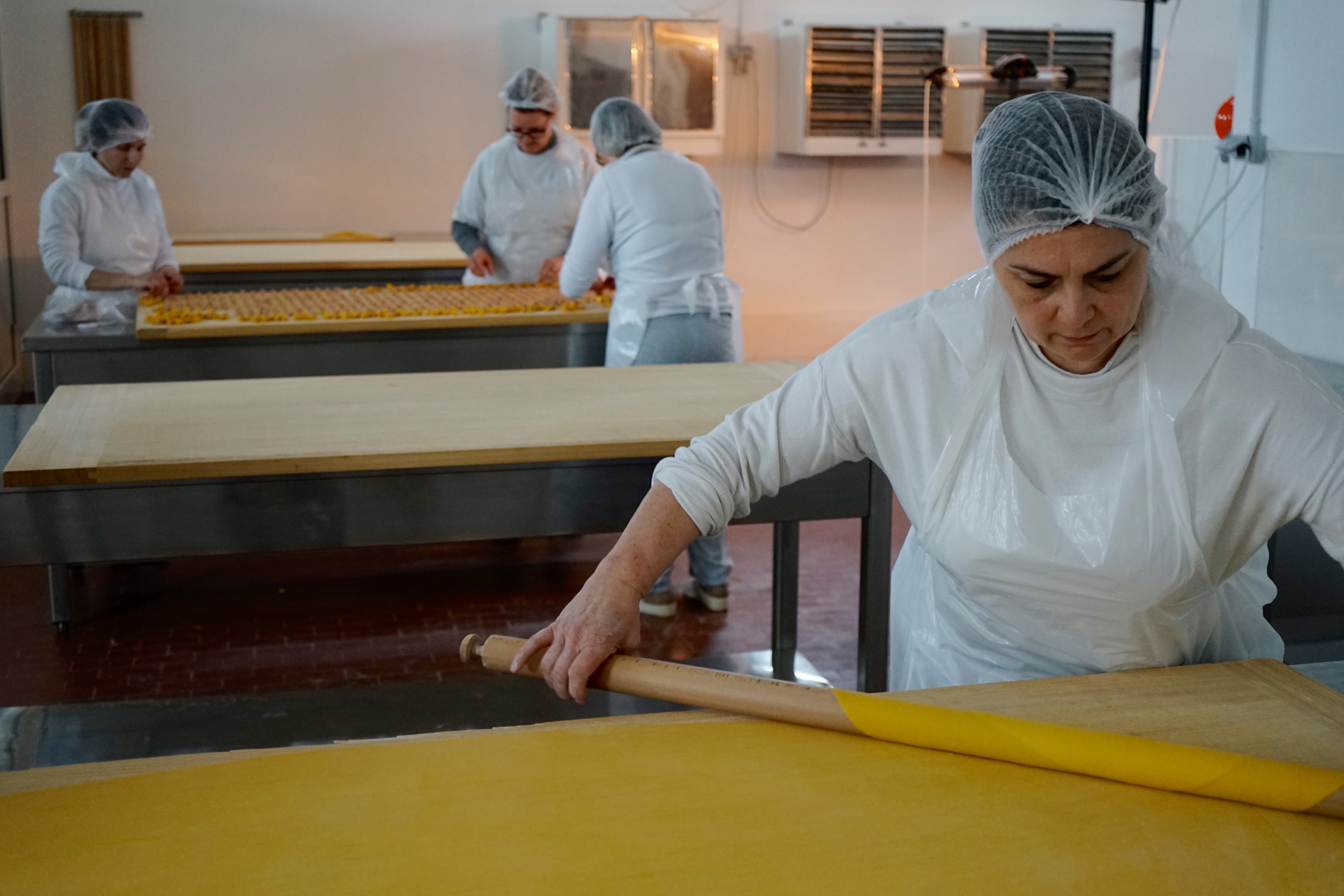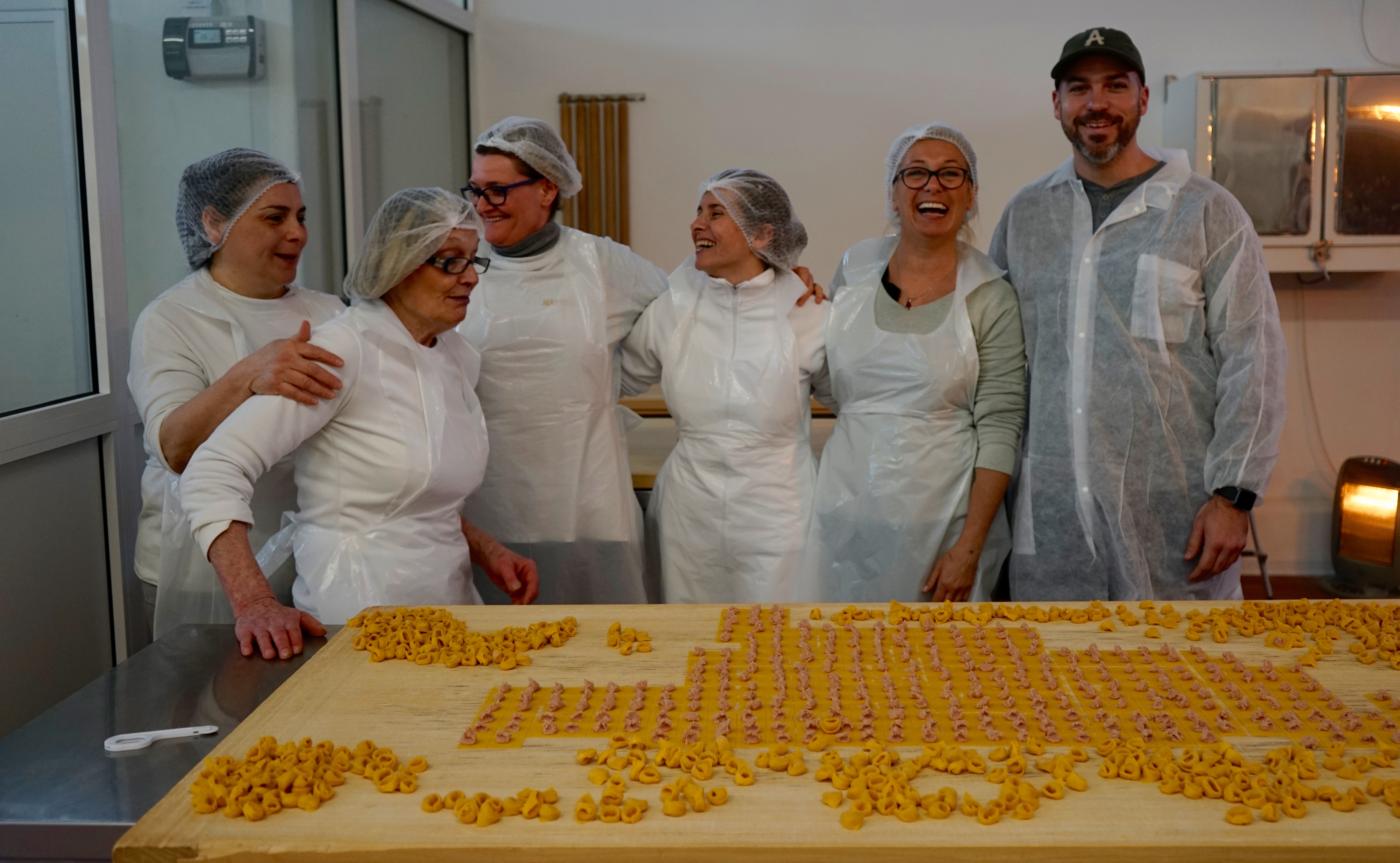Fresh pasta is engrained in Italy’s culture, declined in hundreds of different variants throughout all regions. It goes from southern Italy where usually no egg is used to Piedmont where 40 egg yolks go in 1kg of flour! Talking about a rich diet?

But the mother land of fresh pasta must be Emilia Romagna, where the women who roll the dough rigorously by hand even have a name, the “Sfogline”. In the old days most housewives were “sfogline”, making fresh pasta at home for their families. Today it has become a well payed, sought-after profession. It is a very hard job, manual and tiring. Specific skills are needed and there are not many women prepared to specialize in this unique craft.

We visited a team of women making fresh pasta 8 hours a day (during holidays these can easily become 12…) in an artisanal lab. Making the dough, rolling the sheets and making the shapes, be it tortellini, tagliatelle or ravioli.

If you talk to anyone from this region, no doubt they will insist on the fact that hand made pasta tastes different from machine made. The texture, the elasticity.. there’s absolutely no comparison. If you want to try it you will have to plan your next holiday in Italy or try out this simple recipe at home, but beware, no electric pasta sheeter, just a rolling pin and tough muscles!

Recipe Yield: 5 portions
Ingredients
- Unbleached, unenriched semolina flour, 200g (approx 7 ounces)
- Unbleached, unenriched white wheat flour, 200g (approx 7 ounces)
- Large pasture raised eggs (70 g) 4
Method
On a clean surface, make a pile out of flour and form a deep well in center. Break the eggs into the well and beat very gently with a fork, gradually incorporating flour from the sides of the well, trying not to make the egg spill out of the well. When mixture becomes too thick to mix with a fork, begin kneading using your hands. If flour does not fully incorporate into the dough add one or two tablespoons of water. (Be careful not to add too much!)
On a clean surface, make a pile out of flour and form a deep well in center. Break the eggs into the well and beat very gently with a fork, gradually incorporating flour from the sides of the well, trying not to make the egg spill out of the well. When mixture becomes too thick to mix with a fork, begin kneading using your hands. If flour does not fully incorporate into the dough add one or two tablespoons of water. (Be careful not to add too much!)
Dough is very sticky at the beginning and becomes more elastic and smooth after around 4 minutes of kneading. Once the dough is formed, continue kneading for 3 more minutes to allow the dough to reach its maximum elasticity and firmness. Long kneading is important in order to develop the gluten in the flour and to prevent dough from tearing apart later on. Dust work surface with flour if needed to keep dough from becoming sticky.
Roll dough into a ball shape and wrap tightly in plastic wrap and let rest for 20-30 minutes.
 The traditional way of rolling out the pasta is by using a simple wood rolling pin, so even if you don’t have a pasta machine don’t be intimidated to make fresh pasta at home. Dust working surface with flour and start rolling dough one piece at a time. After every roll, make a quarter turn and repeat the same movement until you have achieved the desired thickness. (Approximately the thickness of a playing card).
The traditional way of rolling out the pasta is by using a simple wood rolling pin, so even if you don’t have a pasta machine don’t be intimidated to make fresh pasta at home. Dust working surface with flour and start rolling dough one piece at a time. After every roll, make a quarter turn and repeat the same movement until you have achieved the desired thickness. (Approximately the thickness of a playing card).If using a machine to roll out the pasta, make sure to firmly attach it to a clean working surface before you start. Then set the pasta machine at its widest setting – and roll one slice of pasta dough through. Fold the dough into thirds and pass through the machine again. Repeat this process 3 times. Lightly dust both sides of the pasta with a little flour every time you run it through. After 3 times of rolling the dough in the widest setting, click the machine setting down, and pass the dough through several times, starting from the widest setting down to around the narrowest, until reaching the thickness of a playing card.
 After achieving the desired thickness it’s time to cut the dough into the desired shape. Make sure to dust dough on both sides so it doesn’t stick to itself.
After achieving the desired thickness it’s time to cut the dough into the desired shape. Make sure to dust dough on both sides so it doesn’t stick to itself.For Lasagne – Cut into large sheets (can vary depending on baking dish)
For Tagliolini – Cut the sheets into strips the thickness of a quarter (2mm).
For Pappardelle – Cut the sheets into 0.7 inch (2cm) strips.
For Tagliolini – Cut the sheets into strips the thickness of a quarter (2mm).
For Pappardelle – Cut the sheets into 0.7 inch (2cm) strips.
When pasta is ready to cook, boil water and add salt. Cook for 2-3 minutes (when the pasta is ready it will float to the top of the surface), drain and toss directly into sauce pan with desired sauce.